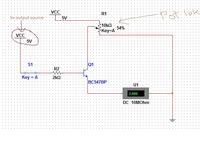dim912
Junior Member level 2

Hi all,
I am using PIC18F25J10 and it tolerable maximum
input voltage for RB0 and RB1 is 3.6V according
to its data sheet.
I am going to use this two pins to get external interrupts.
But the interrupt source device out put is 5V.
How can I interface this device with RB0 and RB1.
thank you..
I am using PIC18F25J10 and it tolerable maximum
input voltage for RB0 and RB1 is 3.6V according
to its data sheet.
I am going to use this two pins to get external interrupts.
But the interrupt source device out put is 5V.
How can I interface this device with RB0 and RB1.
thank you..






